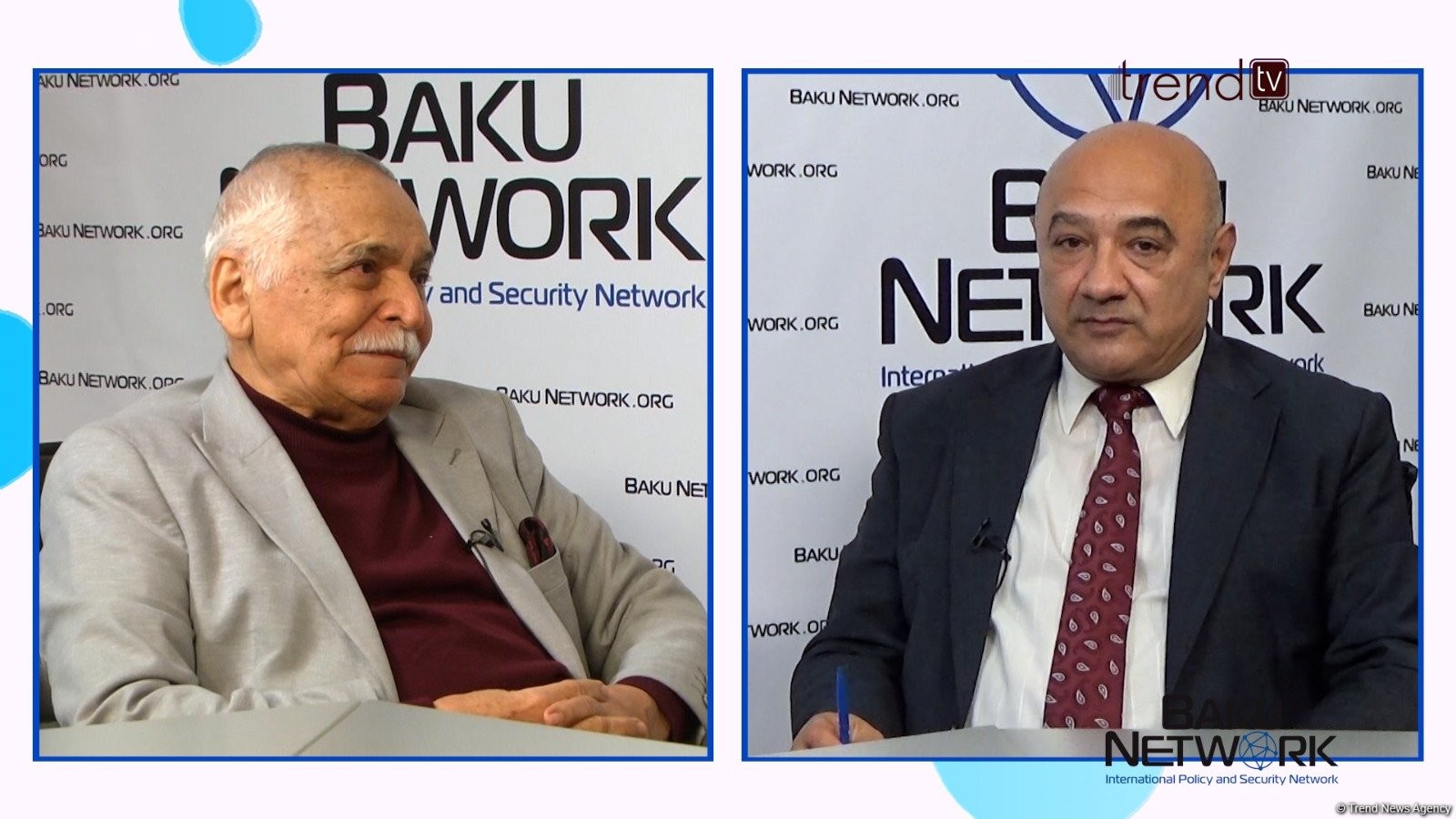
A new episode of the analytical program Dialogue with Tofiq Abbasov has been released on the expert platform Baku Network, featuring the distinguished Azerbaijani artist Arif Huseynov as the guest.
During the conversation, the renowned graphic artist shared his life experiences, artistic journey, and the vital role of art in understanding history and Azerbaijan’s national struggle.
Arif Huseynov was born and raised in Baku on the famed Sovetskaya Street. His recollections paint a picture of the warmth and simplicity of Baku’s communal life, where people lived as one big family. He shared vivid childhood memories, shaped by the hardships of wartime and post-war years, which instilled in him the essence of solidarity.
"It was impossible to live in isolation in our neighborhood," recalled the esteemed artist. "When it snowed in Baku, my friends would light small fires on the road. If I was sent to buy potatoes, sharing a few with my friends was simply natural. It couldn’t have been any other way." These simple childhood memories—of modest joys and of people who shared what little they had—formed the foundation of his worldview, where human values outweigh material wealth.
The Karabakh issue was one of the central themes of the discussion, as it is not only deeply connected to Huseynov’s life but also holds a significant place in his art.
"My youth was shaped by the struggle for the return of Karabakh," said Huseynov. "This is historically Azerbaijani land. The Western Azerbaijanis wish to return to their homeland, and that is their inalienable right."
Huseynov emphasized that artists have always played a crucial role in historical processes. Art is not merely a reflection of reality but also a tool for political and cultural struggle. "Even a landscape can carry political meaning. For my generation, having lived through two Karabakh wars, this has become an intrinsic part of our consciousness," he noted.
Since 2013, Arif Huseynov has dedicated himself to creating a monumental series of works titled Karabakhname, which captures architectural monuments, historical narratives, scenes of exile, and acts of genocide.
"I spent years gathering materials, researching, and meticulously working on every detail to truthfully depict Karabakh’s fate," he recalled. "It was crucial for me to convey historical truth to the world."
In 2019, marking the anniversary of the Khojaly Genocide, the Museum of Modern Art in Baku hosted an exhibition titled Karabakhname, featuring 50 graphic works.
Following Azerbaijan’s victory in the 44-day Patriotic War, Huseynov traveled to the liberated cities and villages to document the ruins and witness everything firsthand.
"When I saw Aghdam, I was devastated—it was a ghost city. Mosques were destroyed, cemeteries desecrated, the theater annihilated," recalled the artist. "But the spirit cannot be broken. I created three works: The First Azan in Free Aghdam, symbolizing the return; The Murder of the Theater, representing the destruction of culture; and Shahbulag Fortress, bearing witness to resilience."
One of these works was gifted to Aghdam, underscoring that his mission continues.
During his trip, Huseynov encountered the shocking aftermath of Armenian occupation—mass vandalism in cemeteries.
"We found the grave of Allahverdi Bagirov, one of the heroes of the First Karabakh War. The Armenians had desecrated his tomb, along with hundreds of others. It was an act of sheer barbarism," he stated, adding that these haunting scenes and emotions inspired new works reflecting the tragedy.
In the discussion, Huseynov drew a parallel between his work and Pablo Picasso’s Guernica, the famous 1937 painting that captured the destruction of a Spanish village by aerial bombings.
"Picasso didn’t paint a ‘meat grinder’—he created a philosophical masterpiece. Art should provoke thought, not merely shock with bloodshed. It is the artist’s duty to provide a symbol of tragedy," emphasized Huseynov.
He also paid tribute to Chingiz Mustafayev, who documented the horrors of the Khojaly Genocide: "A journalist must record the truth, while an artist must create images that remain in memory forever."
In conclusion, Arif Huseynov underscored that art plays a crucial role in preserving historical memory. He firmly believes that artists, writers, and thinkers must strive to create timeless works that convey the truth to the world.
"We must convey our history through culture, art, and science. This is our mission, our weapon, and our legacy," the People’s Artist of Azerbaijan concluded.
